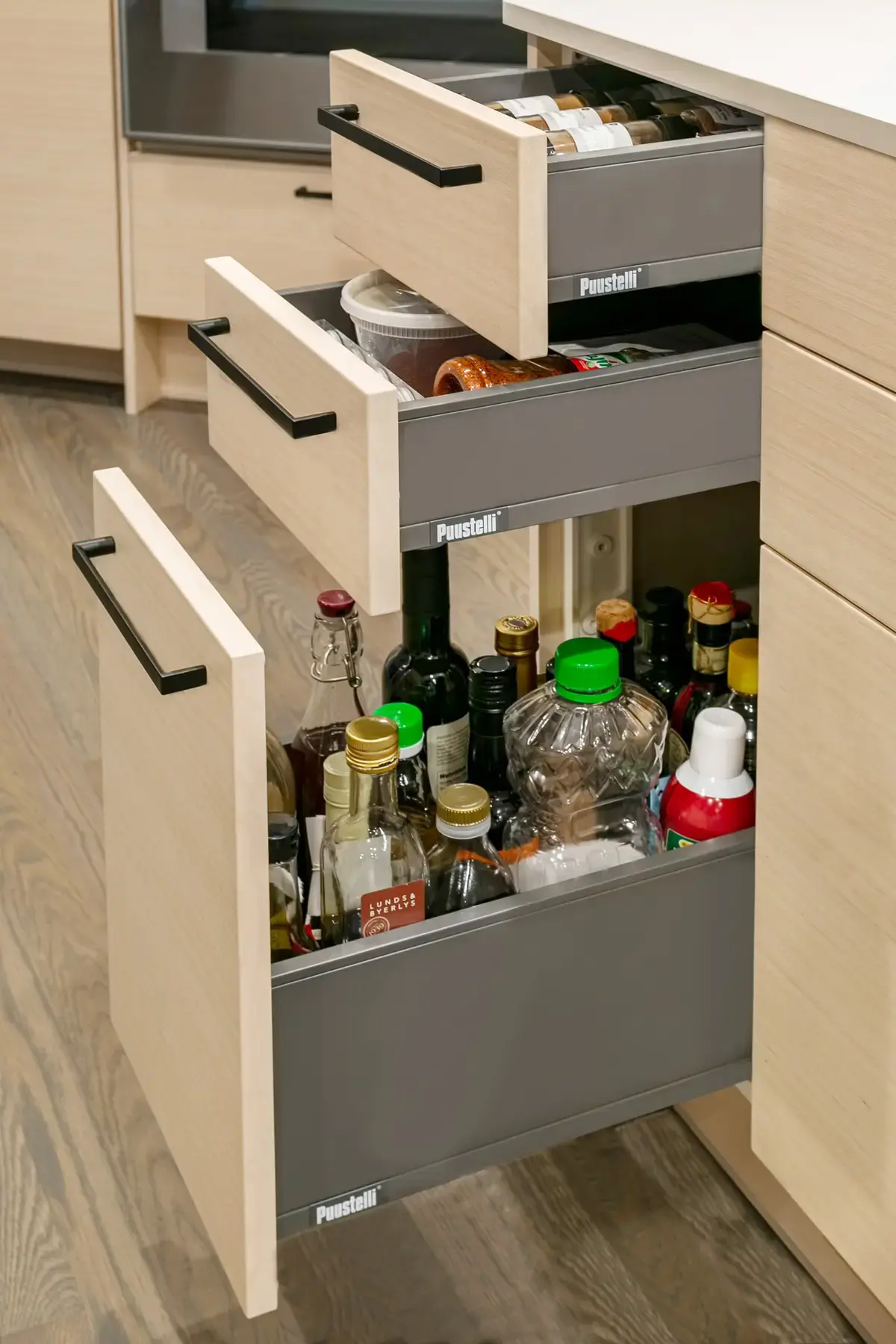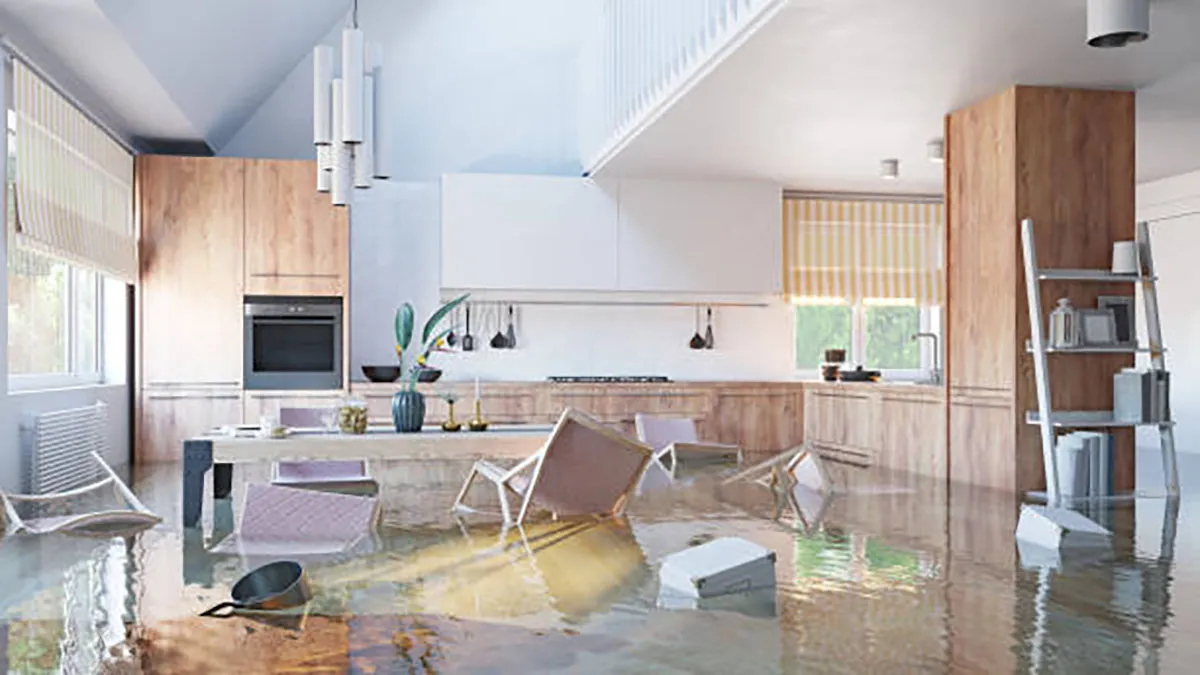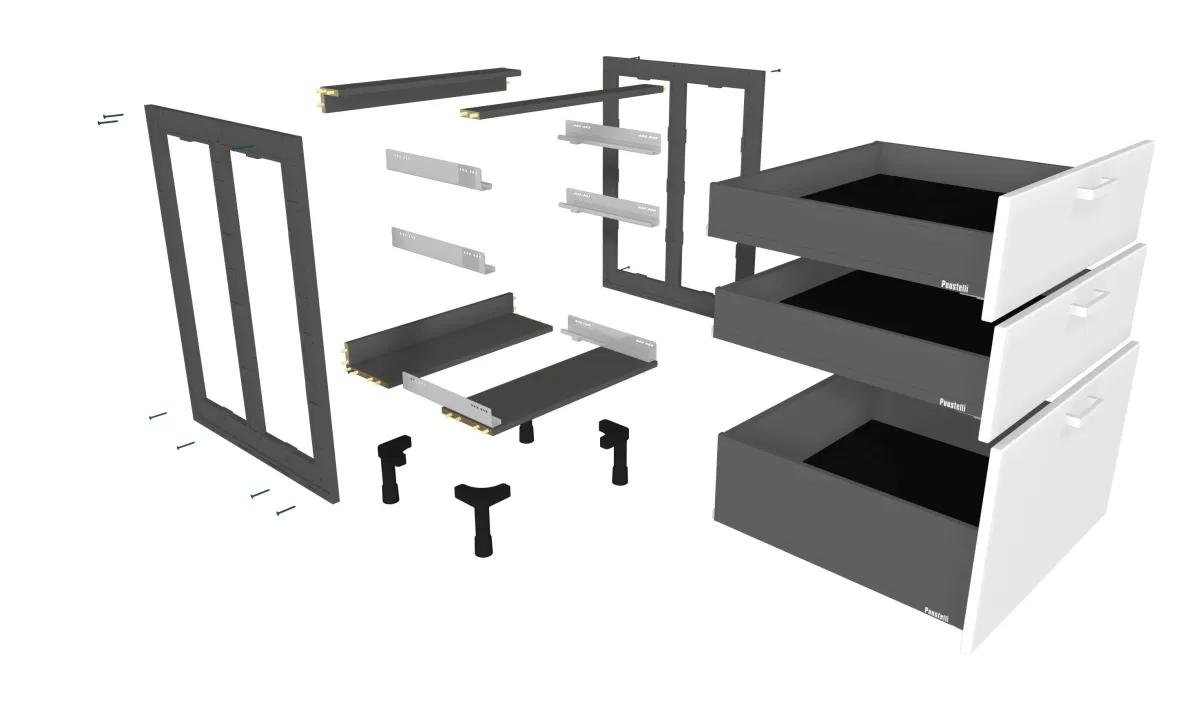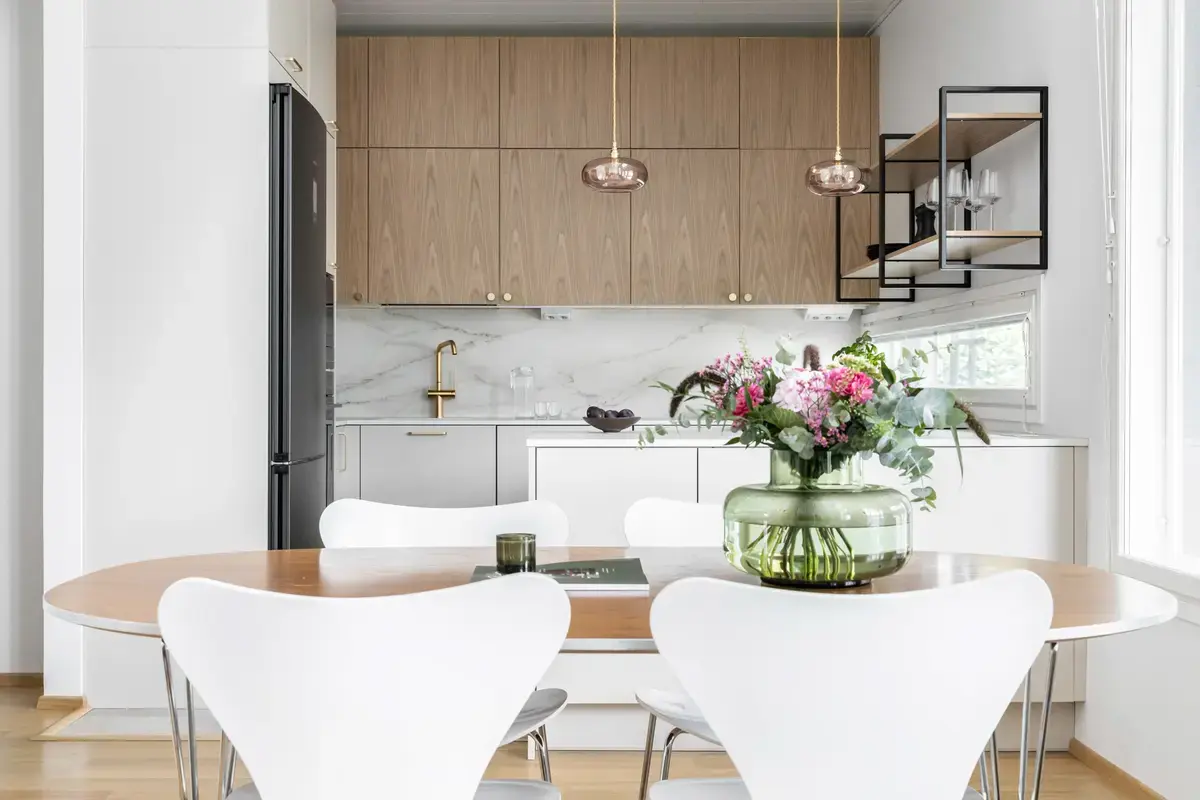- Log in to post comments
Flood Resilient Kitchens: Designing for the Unexpected
In recent years, extreme weather events have become more frequent and severe. From wildfires to devastating floods, these natural disasters are reshaping how we think about home design and renovation. For those living in flood-prone areas, preparing your home to withstand flooding isn’t just a precaution—it’s a necessity.
Flooding can cause extensive damage to every part of your home, but the kitchen—with its appliances, cabinetry, and fixtures—is particularly vulnerable. A flood-resilient kitchen can help reduce repair costs, minimise downtime, and make recovery faster and less stressful. In this blog post, we’ll explore the key steps to creating a flood-resilient kitchen, featuring expert insights and innovative solutions like the Miinus kitchen by Puustelli.
The Growing Risk of Flooding
In the UK alone, over 5.2 million homes are at risk of flooding annually, a figure projected to rise due to climate change and urbanisation. The financial and emotional toll of flooding can be overwhelming. However, with proactive measures and the right design choices, you can significantly mitigate the impact on your home. While plenty of resources are available for general flood-proofing, this guide focuses specifically on protecting your kitchen—one of the most costly and essential spaces to restore after a flood.
1. Choose Flood-Resistant Materials
Flood-resilient kitchens begin with the right materials. While cost-effective, traditional cabinetry often requires complete replacement after a flood, adding to the time and expense of recovery. Materials like MDF are especially prone to warping and swelling when exposed to water and should be swapped for materials that are less susceptible to water ingress.
In contrast, Miinus kitchens by Puustelli are the gold standard in flood-resilient kitchens. Their innovative biocomposite frame was designed to replace the traditional kitchen cabinet and offer a more durable, water-resistant, and eco-friendly product.
- Replaceable Modular Components: Damaged parts can be swapped out individually, saving time and money.
- Durability Through Ecological Materials: The Miinus range integrates ecological materials that are robust yet eco-friendly, ensuring a reduced environmental footprint.
- Exceptional Water Resistance: The Miinus carcass structure uses an advanced biocomposite frame, which is highly water-resistant. This innovative frame design ensures that even after prolonged exposure to water, the structure remains intact and functional, reducing the need for extensive replacements.
Tony Lonnqvist, Miinus Project Manager, explains: “Where before, whole kitchens needed replacement due to flood damage, homeowners can move back in quickly as any affected components of Miinus can be replaced efficiently. We’ve retained wood as a natural feature but paired it with robust, water-resistant materials to extend its lifespan.”
By choosing Miinus, you are not just investing in a flood-resilient kitchen but also a system that prioritises sustainability and long-term value.
2. Elevate Appliances and Fixtures
Floodwater doesn’t just damage cabinetry; it can also ruin costly appliances. To protect these investments, consider raising your appliances off the floor. Here are some practical ideas:
- Elevated Dishwashers: Instead of a standard dishwasher, consider a dishwasher drawer, which is set higher off the ground to avoid water exposure.
- Fridge-Freezer Arrangements: Smaller side-by-side fridge-freezer units can be installed on platforms or set higher within cabinetry.
- Wall-Mounted Ovens and Microwaves: These can be placed at safe heights, ensuring they remain functional even after a flood.
By elevating your appliances, you not only reduce the risk of replacement but also ensure that you can quickly resume using them once the waters recede.

In an emergency drawers and their contents can be easily stowed out of reach of flood water
3. Design for Quick Removal
When a flood warning is issued, having a plan to protect your kitchen and its contents can make a significant difference. Consider the following:
- Opt for Drawers: Opt for drawers wherever possible instead of cupboards. Drawers can be quickly removed and carried upstairs with their contents intact, saving much-needed time and effort during an emergency.
- Cupboard Doors: Choose cupboard doors with mechanisms that can be easily detached for safe storage upstairs. Practice attaching and detaching them to ensure you are prepared in the event of a flood.
- Practice Removal Ahead of Time: Ensure you and your family know how to remove plinths, drawers, and cupboard doors before a flood occurs. Practising in advance will make the process faster and less stressful during an actual emergency. Familiarity with the process also reduces the risk of damage to your kitchen components during removal.
- Turn off your electrics: Do not forget to turn off your electrics at the mains before the flood! The kitchen contains the largest concentration of electrical appliances so this is especially important in this area.
These simple adjustments can help you safeguard your kitchen components before floodwaters arrive, reducing both damage and the time needed for repairs.
4. The Importance of Modular Design
Flood damage often affects only certain parts of your kitchen, but a modular design approach can significantly reduce repair costs and recovery time. Here’s how to optimise your kitchen for modularity and replaceability:
- Split Side Panels: Use side panels divided into upper and lower sections. In the event of a flood, only the lower portion of the panels needs to be replaced, saving both time and resources.
- Water-Resistant Base Units: Opt for base units made from materials that are less likely to warp or swell when exposed to water. This prevents the need for complete cabinet replacements and extends the lifespan of your kitchen.
- Neutral Upper Cabinet Design: Upper cabinets are less likely to be damaged during a flood. Choosing neutral designs and colours for these cabinets ensures they coordinate well with a variety of base cabinet styles, allowing you to replace only the affected lower units.
- Future-Proof Replaceability: Ensure your kitchen design allows for the isolation and replacement of individual units, components, or parts. Work with a fitter who understands the importance of planning for ease of replacement, so any future repairs can be carried out with minimal disruption. This approach ensures that even if flood damage occurs, repairs can be swift, cost-effective, and stress-free.
A modular approach expedites the repair process, allowing you to get your kitchen back in working order quickly after flooding.
Let's Talk
Ready to make your kitchen more flood-resilient? Schedule a free design consultation today and start the journey!



